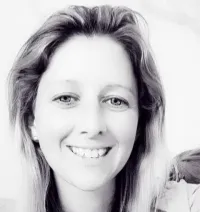THE YOUR OT TUTOR BLOG
Articles on important topics for occupational therapists...


How can student placements be more efficient?
September is all about students at Your OT Tutor, so I thought I’d continue the theme with this month’s blog and answer one of the most frequently asked questions about hosting student placements: How can student placements be more efficient!?
There are lots of benefits of hosting students, including the opportunity to get some projects completed, enhanced service provision with clients with bonus therapy sessions, an opportunity for OTs to improve their supervision skills, and even potentially benefits for new grad recruitment. Despite this, anyone who has ever hosted a student knows that they can take up so much time, and this can be enough to turn you off making a placement offer.
But, there are lots of strategies you can use to try to cut down time spent on placement related admin tasks, as well as one-on-one support for the student, while at the same time actually enhancing the placement experience for your student. Sounds too good to be true? Well, it’s not, and I’ll tell you how to do it now!
Here are my top 3 suggestions for helping to boost the efficiency of your student placements.
1. Put together a comprehensive kit of resources for student placements
Do you have a bit of an ad hoc approach to running student placements? Every time a new student starts do you spend hours typing out the same answers to questions, or creating timetable templates, or putting together a list of helpful websites they can visit? Please stop doing this! Instead, save them as you go, make them look professional with your company branding, and store them so you can re-use them, instead of reinventing the wheel each time!
Some essential things you should have in your kit include:
· Templates for email correspondence with students prior to placement starting
· Checklists for what needs to be setup at your workplace before the student starts
· Handouts with info about your caseload and FAQs about being a student at your workplace
· Self-directed learning activities that students can do without you (more on that soon!)
· Guides and tip sheets for supervisors about billing, giving feedback and what to do if the student experiences difficulty
· Surveys for evaluating how the placement went so you can improve for next time
There is even more I would recommend you include. It does take a long time to put this together initially, but it will save you time in the long run if you want to host students regularly. I’d suggest you block out some time in your schedule to start working on a kit, OR, and this is my very biased opinion, you can take the smart option and consider purchasing the Clinical Educator Starter Kit, where I’ve prepared these resources (and more) for you.
2. Don’t feel guilty about giving students self-directed learning time – you both need it!
Lots of supervisors feel the student needs to attend every appointment that they do, otherwise they’ll miss out! But is the purpose of the placement so that they can ‘see’ as much as possible, or is it that they develop a good understanding of the clinical reasoning needed to work in your caseload? Spoiler alert – it’s the second option. But students can’t develop in-depth clinical reasoning skills just from watching or doing sessions – they need extra time and brain-space to do this. And the bonus for you – it generally means they need more self-directed learning time, which gives you some student-free time to keep your own workload manageable.
So how can you scaffold their self-directed learning time?
· Put together a list of resources they can look through relevant to your caseload – no, not a boring ‘orientation folder’ with out-of-date printouts – I mean an electronic list of resources that cater for multiple learning styles, including journal articles, websites, and YouTube videos.
· Prepare some case studies with clinical reasoning questions that take them through common OT processes in your caseload step-by-step, to reinforce what they are seeing and doing themselves and why.
· Have a list of activities they can do when you’re not with them – it should include things like prepping for client sessions, completing reflections on previous sessions that they can discuss with you in supervision, or practicing how they administer an assessment.
If this sounds great, but you’re not sure where to even start to put these resources together, check out my Clinical Educator Starter Kit, including the ‘sneak peek’ free download which gives you an example of how to setup some case study questions related to equipment prescription.
3. Embrace the power of peer-learning and host multiple students!
Now while you may be thinking “you’re crazy Clare, how could that possibly make placements more efficient!”, hear me out…
If you can facilitate opportunities for students to work together, it can actually reduce the amount of time you need to spend providing one-on-one support to the student. Research tells us that there are many benefits for the student's learning when they work with other students, but the added benefit for supervisors is that students become less reliant on you. They can brainstorm session plans, answer each other’s questions before they come to you, and give each other feedback.
Sounds great, but how can you facilitate peer learning without having to take on a squad of students yourself?
· If your team and workspace is large enough, be strategic with when each supervisor offers placements and try to coordinate them so there will be two students at your workplace at once, or at least some period of crossover.
· If you can’t do this, network with some other local companies with similar caseloads and coordinate your placement offers with them; then the students can block out the same times in their schedules and arrange time for online or face-to-face catchups to work on activities together (projects and the self-directed case studies mentioned before are great for this).
· If you are a clinical educator veteran and want to give yourself a bit of a challenge, you are allowed to take on two students yourself. I wouldn’t recommend this for newbie supervisors, and I’d say start with a shorter placement where you can minimise any other extra commitments you have in your diary for the duration of the placement, but it can work (and yes, I’ve done it multiple times myself in both public and private sectors – happy to share more tips if you need them!).
Now I could keep talking about all things students for ages, but that’s probably enough to get you started! For more resources and tips related to hosting student placements, visit my website or book in a time to chat!
If you found this newsletter helpful, you may want to subscribe to the mailing list – there are heaps of resources, courses, and CPD opportunities, with more being added regularly.
#OccupationalTherapy #ClinicalEducation #YourOTTutor #Students






